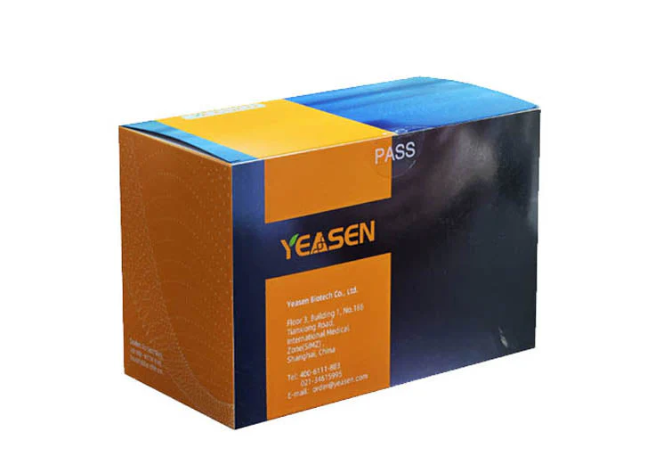Description
Fibronectin (FN) is an extracellular glycoprotein that exists in soluble form in body fluids or in insoluble form in the extracellular matrix. As one of the main cell adhesion molecules, FN plays a key role in many important physiological processes, such as embryogenesis, wound healing, hemostasis and thrombosis. Changes in fibronectin expression, degradation and combination are closely related to a large number of pathological occurrences, including cancer and fibrosis.
Applications of fibronectin (FN):
1) As a cell culture matrix; its function is to promote cell growth, increase cell adhesion rate, enhance cell metabolism level, shorten cell growth time; increase cell fusion rate in hybridoma technology, etc.
2) Disease diagnosis and treatment; its function is wound repair and healing, cancer diagnosis and treatment, treatment of vascular system and cardiovascular and cerebrovascular diseases, etc.
This product is a recombinant human fibronectin derived from rice endosperm cells, existing in monomeric form, and can be used as a cell culture matrix to replace Matrigel, rat tail collagen, blood-derived fibronectin, etc., to increase cell adhesion rate, enhance cell metabolism level, and shorten cell growth cycle. It can also be added directly to the culture medium to replace or reduce the amount of serum used, promote cell adhesion, migration, mobile growth, and maintain cell status.
This product is a freeze-dried powder, which is of cell culture grade and has the characteristics of small batch-to-batch differences and no potential risk of viral infection.
Product Properties
|
CAS Number |
86088-83-7 |
|
Source |
Rice |
|
Molecular Weight |
200~210 kDa |
|
Physical Appearance |
Sterile Filtered White lyophilized (freeze-dried) powder. |
|
Purity |
> 95% by SDS-PAGE |
|
pH |
6.0~8.0 |
|
Biological Activity |
The ED50 as determined by a celI adhesion assay using B16-F1 mouse melanoma cells is less than 1.1 μg/mL,corresponding to a specific activity of > 1.17 X 107 IU/mg. |
|
Endotoxin |
< 0.5 EU/μg |
Shipping and Storage
This product should be stored at -25~-15℃ for 3 years.
Reconstitution
Dissolve recombinant human fibronectin (rFN) in 1×PBS to prepare a storage solution with a concentration of 1 mg/mL. Store at -20°C in aliquots according to single-use doses to avoid repeated freezing and thawing. It is effective for 3-6 months.
Instructions for use
1. Coating experiment (taking 6-well plate as an example, for other culture plates, please refer to Table 1 )
1.1 Take out an appropriate amount of recombinant human fibronectin (rFN) and dilute it to the working solution concentration with sterile 1×PBS, pH 7.2~7.4, and the final concentration reference range is 50~100 μg/mL. After mixing, add it to the 6-well plate, 800 μL/well, to ensure that the working solution completely covers the bottom of the 6-well plate.
1.2 Place the 6-well plate with rFN working solution at 4 ℃ overnight or 37 ℃ for coating for 1 h.
1.3 Collect the working solution in the 6-well plate and store it at 4 ℃. It can be used for coating other culture bottles/plates within one week.
1.4 Take out the 6-well plate coated with rFN, add normal cell culture medium, and directly inoculate cells. rFN promotes cell adhesion and growth.
1.5 If the coated 6-well plate is not used for the time being, store in sealed container at 4℃. It is recommended to use it within one week.
Table 1. Recommended rFN addition amounts for different culture bottles/plates
|
Cell culture dishes/plates |
Bottom area (cm2) |
Recommended dosage |
|
96-well plate |
0.32 |
50μL/well |
|
24-well plate |
2 |
200μL/well |
|
12-well plate |
4.5 |
400μL/well |
|
6-well plate |
9.6 |
800μL/well |
|
35mm dish |
8 |
600μL/well |
|
60mm dish |
21 |
1.6mL/dish |
|
T-25 bottle |
25-28 |
2 mL/ bottle |
In the coating/plating experiment, the amount of recombinant human fibronectin (rFN) working solution added should be adjusted according to the size of the culture dish/bottle, as shown in Table 1 below.
2. Cell Culture Experiment
During cell culture, adding rFN directly to the cell culture medium can promote cell adhesion, migration, and maintain cell status. The final concentration reference range is 5~50 μg/mL.
Notes
1. This product is for research use only.
2. Please operate with lab coats and disposable gloves,for your safety.
Cautions
1. Avoid repeated freeze-thaw cycles.
2. For your safety and health, please wear lab coats and disposable gloves for operation.
3. For research use only!
Payment & Security
Your payment information is processed securely. We do not store credit card details nor have access to your credit card information.
Inquiry
You may also like
FAQ
The product is for research purposes only and is not intended for therapeutic or diagnostic use in humans or animals. Products and content are protected by patents, trademarks, and copyrights owned by Yeasen Biotechnology. Trademark symbols indicate the country of origin, not necessarily registration in all regions.
Certain applications may require additional third-party intellectual property rights.
Yeasen is dedicated to ethical science, believing our research should address critical questions while ensuring safety and ethical standards.

